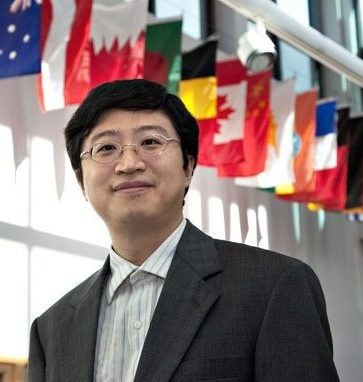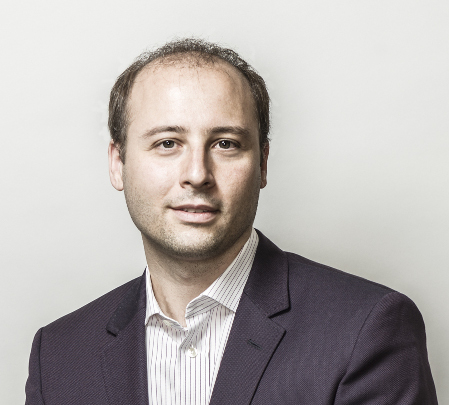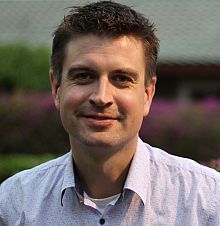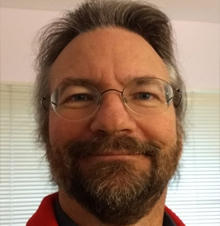Proceedings of the 4th International Conference
on Theoretical and Applied Nanoscience and Nanotechnology (TANN'20)
November 9 - 11, 2020 | Niagara Falls, Canada
Virtual Conference
The keynote information for the 4th International Conference of Theoretical and Applied Nanoscience and Nanotechnology (TANN'20) is as follows:

Dr. Jifeng Liu
Dartmouth University, USA

Dr. Jonathan Baugh
University of Waterloo, Canada

Dr. Simone Pisana
York University, Canada

Dr. Wilfred van der Wiel
University of Twente, Netherlands

Dr. Michael Hilke
McGill University, Canada
TANN'20 Plenary Speaker

Dr. Jifeng Liu
Dartmouth University, USA
Dr. Jifeng Liu is currently an Associate Professor at Thayer School of Engineering, Dartmouth College. He received his B.S. and M. S. degrees in Materials Science and Engineering from Tsinghua University, Beijing, China, and his Ph.D. degree from Massachusetts Institute of Technology. His major research field is nanophotonic materials and devices, including integrated photonics for ultralow energy photonic datalinks as well as nanomaterials and nanostructures for novel photodetectors, solar photovoltaics and solar thermal energy harvesting. He has authored or co-authored more than 80 peer-reviewed journal papers, more than 70 conferences papers, and 6 book chapters, which have been cited ~10,000 times according to Google Scholar. Dr. Liu has also been granted 14 U.S. patents related to nanophotonic materials and devices. He received National Science Foundation (NSF) Faculty Early Career Development (CAREER) Award in 2013, and was elected a Senior Member of the Institute of Electrical and Electronics Engineers (IEEE) in 2015.
Topic of Keynote:
Nanophotonics: There’s Plenty of Room to “Light up” the Bottom
TANN'20 Keynote Speakers

Dr. Jonathan Baugh
Jonathan Baugh is an Associate Professor in the Department of Chemistry and the Institute for Quantum Computing at the University of Waterloo. His research group investigates the potential of semiconductor nanoelectronics for scalable quantum information applications. Dr. Baugh obtained a PhD in Physics in 2001 at the University of North Carolina at Chapel Hill, and did seminal work on nuclear magnetism in quantum dots during postdoctoral studies at the University of Tokyo. He has published more than 60 research papers across many subfields, including magnetic resonance, quantum control, quantum transport, quantum dots, nanowires, proximity superconductivity, nanomechanics and materials science. Recently, he has engaged the engineering community by giving invited tutorials on emerging quantum technologies at several international semiconductor/microelectronics conferences.
Topic of Keynote:
Semiconductor nano-electronics for quantum information and sensing

Dr. Simone Pisana
York University, Canada
Simone Pisana received his PhD at the University of Cambridge in 2008. His graduate studies focused on electronic properties of novel nanostructured materials such as carbon nanotubes, semiconducting nanowires, and graphene. He then joined Hitachi Global Storage Technologies (now Western Digital) as a Postdoctoral Researcher and continued on to become Research Staff Member in 2010 and Senior Research Manager in 2014. While in industry, he worked on nanoscale magnetic field sensing devices and energy-assisted magnetic recording technologies. Dr. Pisana joined the Department of Electrical Engineering and Computer Science in the Lassonde School of Engineering at York University in 2014 as Associate Professor, and is serving as Graduate Program Director since 2018. His research is aimed at exploring transport phenomena in nanoscale devices & materials for energy efficient nanoelectronic device engineering. He is Senior Member of the IEEE, and has authored over 40 refereed journal articles with over 8,000 citations and 12 US patents & applications.
Topic of Keynote:
Nanoscale heat transport at plasmonic interfaces and in 2D crystals

Dr. Wilfred van der Wiel
University of Twente, Netherlands
Name: van der Wiel
Given names: Wilfred Gerard
Academic titles: Prof. Dr. MSc.
Birth date and place: 28 May 1975, Gouda, The Netherlands
Present function: Professor of NanoElectronics and
Director of Center for Brain-Inspired Nano Systems (BRAINS)
E: W.G.vanderWiel@utwente.nl W: www.utwente.nl/brains
EDUCATION
1993-1997 MSc Applied Physics (cum laude ), Delft University of Technology, The Netherlands
1998-2002 PhD Applied Physics (cum laude1), Delft University of Technology, The Netherlands; NTT Basic Research Labs. Japan
WORK EXPERIENCE
2002-2005 PostDoc and JST Sakigake Fellow, University of Tokyo, Japan
2002-2007 Research Program Leader, University of Twente, The Netherlands
2002-2009 Associate Professor, University of Twente, The Netherlands
2009-present Full Professor and Chair, University of Twente
2018-present Director Center for Brain-Inspired Nano Systems (BRAINS)
ACADEMIC STAFF SUPERVISED UP TO NOW
30 PhD students, 5 PostDocs, 2 associated professors
BRIEF SUMMARY OF RESEARCH OVER THE LAST FIVE YEARS
• Energy-efficient hardware for artificial intelligence by Material Learning,
Nature Nanotechnology 10, 1048 (2015), Nature 577, 341-345 (2020), Nature Nanotechnology (2020)
• Quantum transport in nanoelectronic devices, Sci. Rep. 6, 18827 (2016); Nano Letters 15, 5336 (2015); Appl. Phys. Lett. 106, 172101 (2015).
• Acousto-electronic transport (STW project NanoArrays 2008-2013, EU-Marie-Curie-ITN SAWtrain 2015-2018, NWO project QUAKE 2019-2023) and surface acoustic wave induced electron transport in semiconductors.
• Hybrid inorganic-organic electronics: theme of ERC Starting Grant (2009-2014). Realization of bottom-up fabricated single-electron devices and development of methods for patterned charge doping of silicon and spin doping of metals, reported in Nature Nanotechnology 7, 232 (2012). Electric characterization of molecular monolayer devices.
• Biosensors for early-stage diagnostics based on nanoelectronic devices. Theme of two ERC Proof-of-Concept Grants (2014 & 2015).
Full list of publications available here
OTHER SCIENTIFIC ACTIVITIES
2007 – 2012 Member Young Academy (DJA), Royal Netherlands Academy of Art and Sciences
2012-2017 Member Global Young Academy (GYA)
2014 – 2016 Member Executive Committee of the Global Young Academy (GYA)
2016-present Member Advisory Editorial Board Journal of Science: Adv. Materials and Devices
2018-present Member External Advisory Panel Groningen Cognitive Systems and Materials Center, University of Groningen, The Netherlands
2020-present Member External Advisory Board, Research Center for Neuromorphic AI Hardware, Kyushu Institute of Technology, Japan
2020-present International advisor for WISE-SSS program, Tokyo Institute of Technology, Tokyo, Japan
Topic of Keynote:
Material Learning

Dr. Michael Hilke
McGill University, Canada
Michael Hilke is currently a faculty member in the department of Physics at McGill University. After completing his doctorate at the University of Geneva on disordered systems, he joined the group of Daniel Tsui (Physics Nobel laureate in 1998) in Princeton in 1996 to work with on two dimensional electron systems, where he discovered the quantized Hall insulator. After joining McGill in 2001 he built-up the Quantum Nano Electronics Laboratory (QNEL), a low temperature laboratory and a facility for the fabrication, processing and simulations of quantum, nano and low dimensional materials as well as applications in the biomedical field. He was the director of INTRIQ (Center for Quantum Information in Quebec) for 3 years, director of CPM (Center for the physics of Materials) at McGill for 6 years, and director of RQMP (Advanced Materials Center in Quebec) for 2 years. He is also active in several research projects on physics education research using new smart online learning tools.
Topic of Keynote:
Phonon coherence and phonon engineering in nanostructures and graphene isotope superlattices